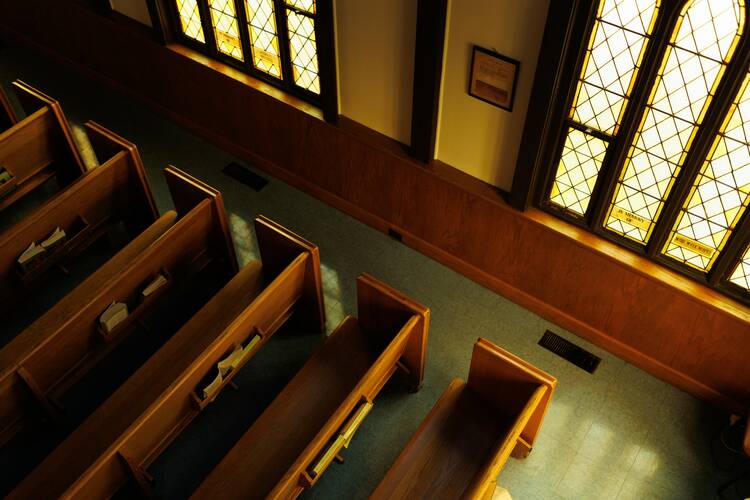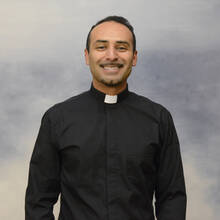Begin Lent with a reflective conversation with God
For the biblical readings of the Sundays of Lent, the church chose texts that offer many layers of interpretation. Some readings have themes that will continue throughout the readings of subsequent weeks, while on other Sundays, each reading will contribute in some way to an overall motif or idea for that particular day. For example, this Sunday’s readings begin with the idea of a covenant between God and humanity. This theme will continue next week when we read about God’s covenant with Abraham, but the readings of this Sunday have their own depth and insight on their own.
It [baptism] is not a removal of dirt from the body but an appeal to God for a clear conscience, through the resurrection of Jesus Christ. (1 Pt 3:21)
Into what are you being invited to enter more deeply this Lent?
What must you do to prepare for this journey?
Who or what will help you along the way?
Accounts of the covenant have certain elements that are significant in themselves, especially the “sign” of the covenant that God offers humanity. Biblical authors also found spiritual significance in elements that do not relate to the covenant, like the natural setting and characters of the narrative. As the readings draw these themes and motifs together, we can hear the deeper “internal conversations” within the Bible. It is from these conversations that the church’s spiritual and theological traditions come forth.
Consider the dramatic opening scene from this Sunday’s first reading: The flood waters recede, and God establishes a new ecology on the earth and a new covenant with Noah and his sons. “See,” God says, “I am establishing my covenant with you and your descendants after you and with every living creature with you” (Gn 9:9-10). The covenant even includes all the animals that had survived in the ark with Noah. To begin Lent with a reminder of God’s original pledge to humanity prompts us to deepen our own understanding of the unique covenant God has made with each of us. Biblical covenants exist because of God’s initiative; they do not depend on humans to remain faithful. Humans may fail in their obligations, but God always sustains the relationship.
God’s covenant is mentioned explicitly five times in this Sunday’s first reading alone. The covenant has a sign, a symbol that will remind future generations of God’s fidelity. “I have set my bow in the clouds,” God states, “to serve as a sign of the covenant between me and the earth” (Gn 9:13). The presence of a rainbow during or after a storm can be a hauntingly poetic and beautiful portent of clear skies to come. God chose this beautiful image from nature as a perpetual reminder of divine presence on earth. The power of this sign paints the image and the promise indelibly onto the reader’s mind. It is a work of art that draws a person of faith ever more deeply into reflection on its meaning. The very point of such a sign is to give rise to reflection. The strongest covenants are those that are renewed over and over again.
This Sunday’s Gospel, while short and very different in setting, provides its own reflection on these covenantal themes. In contrast to Noah’s flood, Jesus begins his ministry in the driest of places: “At once the Spirit drove him into the desert” (Mk 1:12). Deserts and open water share an important characteristic. Each presents a vast horizon that can evoke the question: Where do we go from here? In Scripture, the desert is the place one faces existential realities. The desert can be a metaphor for many things, but foremost it is a place of testing. In this, it is an apt symbol for Lent, a time of testing for which the exam question is clear: How is our covenant with God going so far?
At first glance, this Sunday’s second reading from the First Letter of Peter might leave one with more questions than answers. The sacred author describes Jesus as someone who, after his death, speaks to the “spirits in prison who had once been disobedient while God patiently waited in the days of Noah” (1 Pt 3:19). This reference draws together material from the story of the Nephilim (Gn 6:1-4), the Noah saga (Gn 6:5 - 9:29) and traditions from outside of the biblical canon such as those preserved in the Book of Enoch. The sacred author comes to understand Noah’s flood and these other ancient traditions as events that interpret the life, death and resurrection of Jesus. “This prefigured baptism, which saves you now. Not as a removal of dirt from the body but an appeal to God for a clear conscience, through the resurrection of Jesus Christ” (1 Pt 3:21). This is a good example of an early Christian author reflecting on Scripture and tradition to understand the experience of the living Christ. For disciples today, this is a good example of the Bible “thinking about its own thinking,” or drawing its readers ever deeper into the mystery of God.
This Sunday’s readings are a reminder to begin Lent with a reflective conversation with God as a way to renew our own covenant. Lent is not the removal of dirt from our lives, as much as it is a way to approach God with a clear conscience, trusting that Jesus’ resurrection already establishes our covenant on solid ground, safe from any potential flood.








